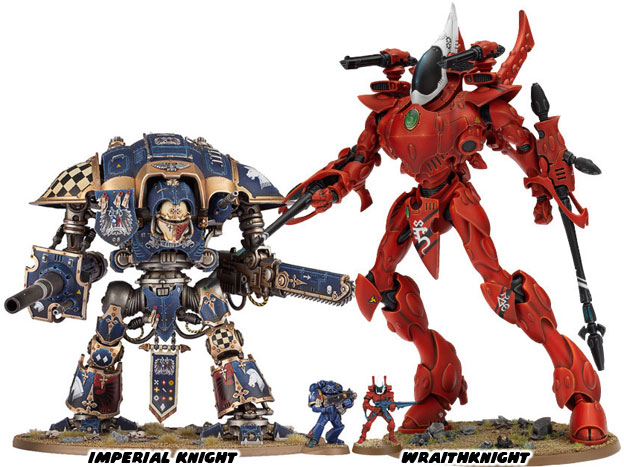
In the 40K universe the titans were the largest robots used in battle. Believe it or not the Imperial Knight was not as big as the smallest Titan. The Imperial Knight was much larger than a Space Marine or a Dreadnought. It was bigger than even the super-heavy tanks used by the Imperial Army. Seeing one walking towards the front line was enough to cause fear of most enemies on the battlefield. Even large Chaos engines of destruction and Ork Squiggoths would find the Imperial Knight formidable. Yet some of the small and mid-size Titans made the Imperial Knight less imposing and even the Space Marines armies seem insignificant. Just look at how massive the foot was for a Reaver Titan compared to a Space Marine. The marine was well over seven-feet tall yet was no taller than a "toe" on the Reaver.
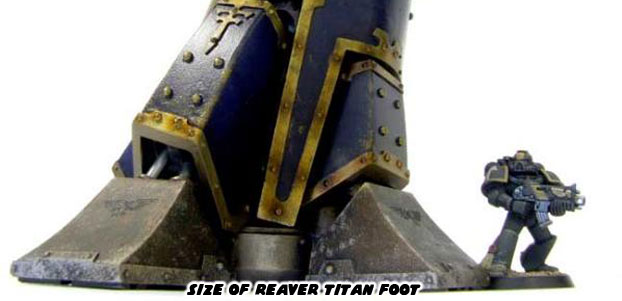
In canon the smallest two Titans employed by the Imperium were the Warhound and the Reaver. Like the Imperial Knight they were used where firepower was necessary and where flexibility was crucial. They had to be able to perform functions that no tank unit could in an area that was too tight for aircraft as well. The Titans were not necessarily as slow and cumbersome as people assumed. With the right crew they could navigate narrow streets, target and strafe opponents without stopping and even bring down buildings around them if they could not hold a position. Depending on the situation they could be equipped with an assortment of weapons, from long range artillery and anti-aircraft missiles, to closer range force claws and plasma cannons . A giant robot may seem like an easy target on the battlefield but they were often protected by invisible force fields. A smaller variation of this shield could be generated by the Imperial Knight. The shield would absorb the energy from explosives, lasers and plasma blasts and deflect it around the frame.
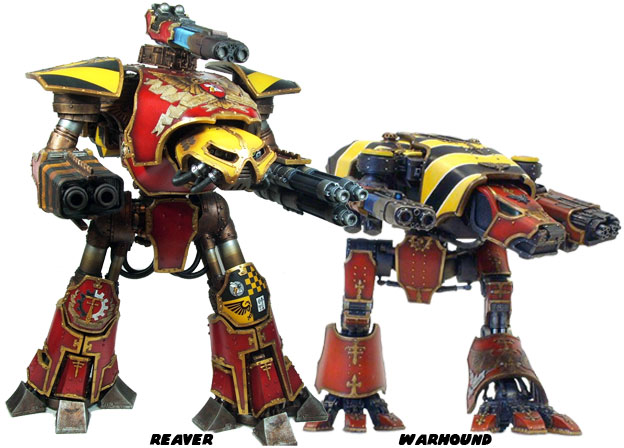
While they were considered "small" they still required a crew to move, function and remain operational. This was where the differences between the Imperial Knight and the Titans really came into play. An Imperial Knight had a crew waiting for it to return from battle in order to perform the necessary repairs and weapon replacements. The pilot was pretty much on his own in the battlefield. A Titan required a crew to operate both on and off the battlefield. Perhaps there was a pilot or two manning the movement and weaponry, but there were countless other servitors taking care of the mechanics in real time. Think of a servitor as a sort of zombie mechanic. They were servants retrofitted with tools, welding torches and wrenches instead of arms and hands. They were strong, loyal and programmed only to perform their duties. In this case a servitor would keep the Titan running on the battlefield while performing all of the maintenance on the fly. A servitor did the things that the R-type Droids did in the Star Wars universe.
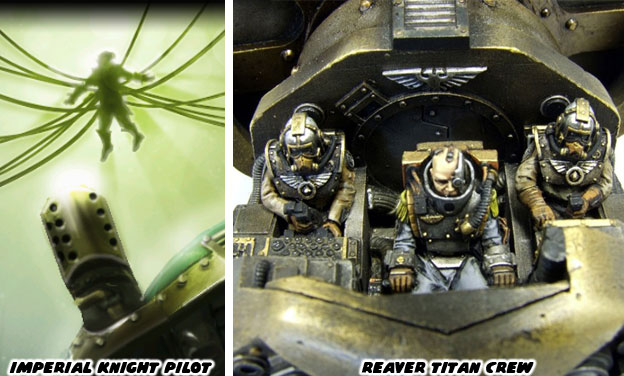
An Imperial Knight was instead piloted by a single individual, he was reliant on his crew only after the battle. The Imperial Knight pilot faced the same challenges that a Dreadnought pilot had. Both types of robotic armor depended on outside crews to aide them, repair them and deploy them because they were not physically capable of doing anything themselves. It was a sad existence when you think about it. To the pilots however it was their duty to the Empire. It was an honor to serve as a mechanized warrior, fighting alongside or as a member of the brave Space Marines. There was a precedent for this, for placing yourself in the heart of a machine. It was a tradition that went back to the year 30,000. The Emperor of Terra had a Golden Throne created by the greatest adepts and scientists from Earth and Mars. The Golden Throne was able to harness his psychic energy and create portals to other planets. He could send his Space Marines almost anywhere in space with this fantastic invention.
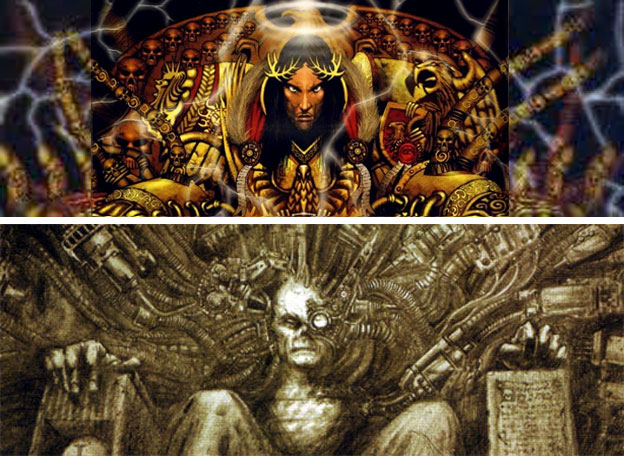
The Emperor was betrayed by his Warmaster Horus and had to fight against him. The Chaos Gods had granted Horus amazing powers which made him a perfect rival to the Emperor. The Emperor killed Horus but was left near death in the fight. He was placed on the Golden Throne and it was turned into a life support system. Instead of tapping into his psychic power it was tapping into the living energy of thousands of powerful psykers, flown in every day from all over the galaxy. Their life force would be depleted in a few hours but combined they would keep the Emperor in a state of suspended animation, or rather slow decay. The Emperor would become fused with the machine for the next 10,000 years. At least one of the Dreadnoughts in 40K canon, Bjorn the Fell-Handed, was a member of the Space Wolves and was alive during the Great Crusade and the Horus Heresy. Imagine the type of mental fortitude that it takes to become attached to a machine for most of your existence. There is a special model and rules created for Bjorn in case the players of the tabletop system want to use the Dreadnought in a campaign.
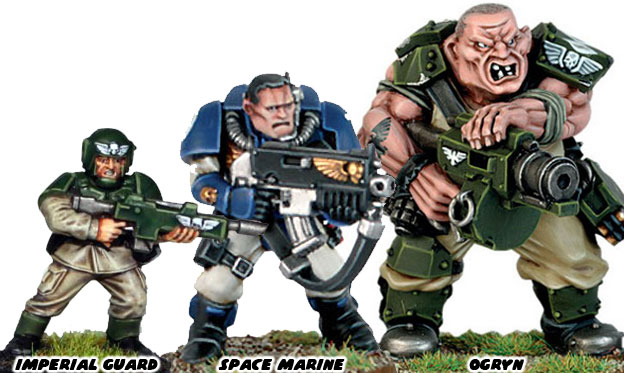
But I digress... I can talk about how awesome the giant robots were in 40K but you do not really appreciate the scale of the Titans until you see them compared to the single-unit types. A Space Marine is much larger than an Imperial Guard soldier, yet they are not as large as an Ogryn. An Ogryn is not as large as a Space Marine in Centurion Armor, nor are they as large as a Dreadnought. The Dreadnought is huge and powerful but is only a fraction as big as an Imperial Knight. This is where things start to fall into perspective.
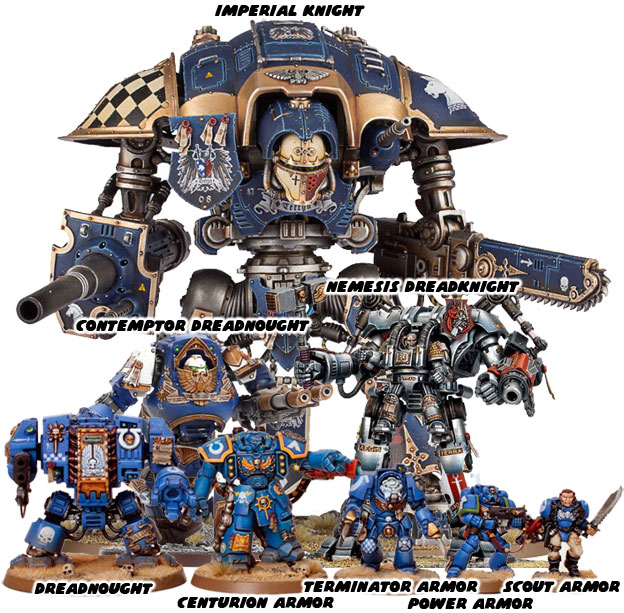
At 50-feet-tall the Imperial Knight is dwarfed by the Titans. Remember that the Warhound and Reaver were small and mid-size Titans. The largest Titans, like the Warlord MKIII for example, were very similar to walking battleships. They had a command, carried a crew, support, radar and artillery. With the cases of the biggest, they could even carry and entire regiment of Space Marines into battle.
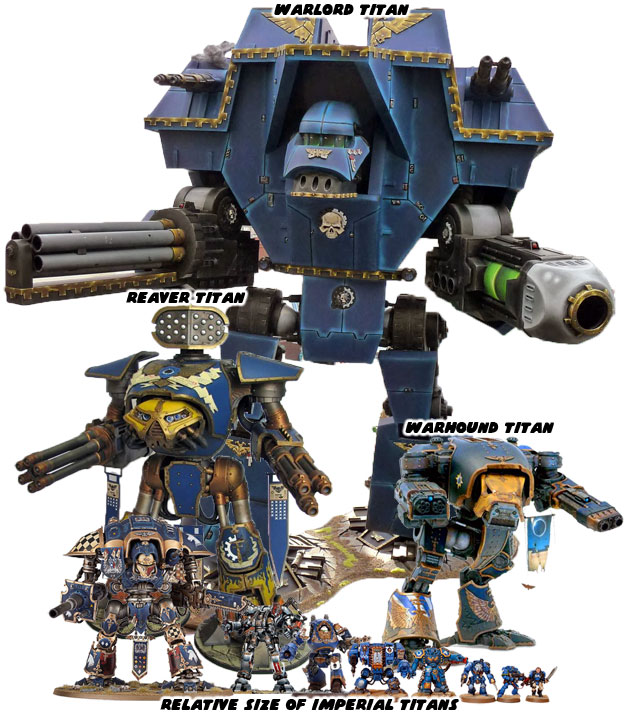
When a Titan goes to war it literally changes the shape of the battlefield. A Titan is a force of nature, like a tornado or hurricane, it is absolutely unstoppable. Entire cities are turned to rubble, forests are burned to the ground and hills are flattened in their wake. Only another Titan or squadron of Titans can offer a suitable challenge. They are absolute symbols of power and can inspire an army to victory and cause the enemy to shrivel in fear.
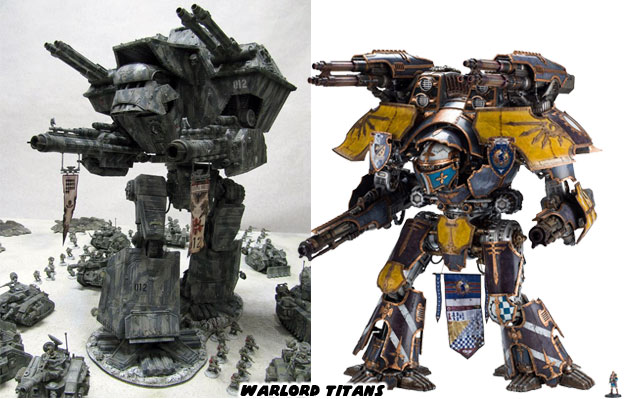
There are Titans in 40K canon that are so obscenely huge that they are almost impossible to imagine. The Warlord Titans are awe-inspiring but they are not the largest class of Titans. At the far end of the spectrum there is a class known as the Warmonger and Imperator. These Titans are walking skyscrapers. In each leg they carry a unit of Space Marines and on their back is a full headquarters contained within a fortress. They were critical during the Great Crusades, lead by the Emperor of Terra himself. Titans helped establish the dominion of the Emperor, and took entire sectors of the galaxy back from alien invaders. They faded in number but their stories grew into legend. A few die-hard tabletop gaming fans around the world have scratch-built their own titans to the exacting specifications set up by the 40K canon.
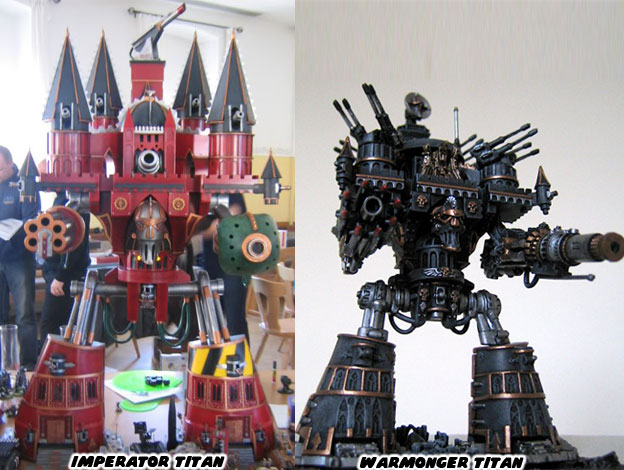
Remember that in 40K the forces of Chaos can corrupt and turn machines into hybrids of demon and robots. The same applies to the Titans. There have been legends of chaotic titans which sprout horns, spit blood instead of plasma and have mechanical tails that slash of their own free will. The crews and pilots on the chaos titans are usually "digested " by the Titan if they do not become fused and part of the nervous and sensory systems. Fans have also scratch-built their own Chaos "Emperor" Titans that are every bit as impressive as the Imperator.
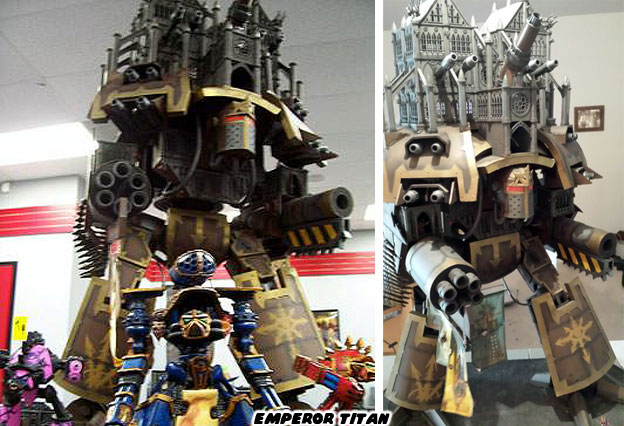
The Titan is the ultimate set piece. Whether we are talking about a tabletop game or a video game. It is very hard to ignore the giant robot, the literal elephant in the room. The Titan has been central to a few PC and console games based on Warhammer 40K. One of the best uses of the robot was in the title Warhammer 40,000 Space Marine. The game by Relic Entertainment features a Warlord class Titan known as the Invictus. In the game players got to run in around the Titan as it rested in an Imperial Hangar. Its weapons were needed to destroy a dimensional bridge being used by Chaos. The player actually got to run on its shoulders, shooting down opponents while it moved into firing position. It was one of the great moments in the history of video games. It was something that a tabletop fan like myself never thought that they would see in any video game.
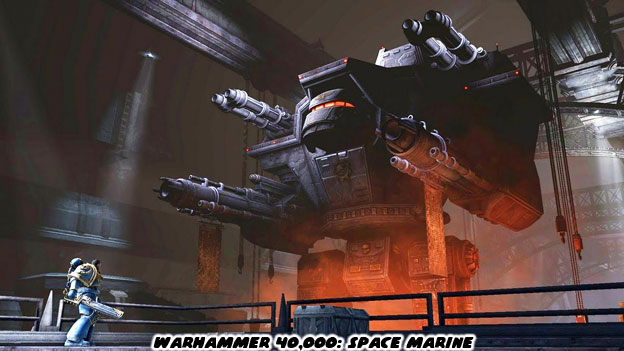
What was fantastic about the 40K universe was how the scale would continue to grow and grow. The most massive of Titans was never big enough, there was always a threat more imposing, more dangerous. War was everywhere and even with these colossal robots the survival of humanity was never guaranteed. In many ways the soul of humanity had already been transferred to the machines. It was done before the first Dreadnought was built, it was even done before the Golden Throne was created. In the next blog we will look at those former humans that are guided by the Machine God. As always if you enjoyed this blog and would like to sponsor me please visit my Patreon page and consider donating each month, even as little as $1 would help make better blogs and even podcasts!

No comments:
Post a Comment